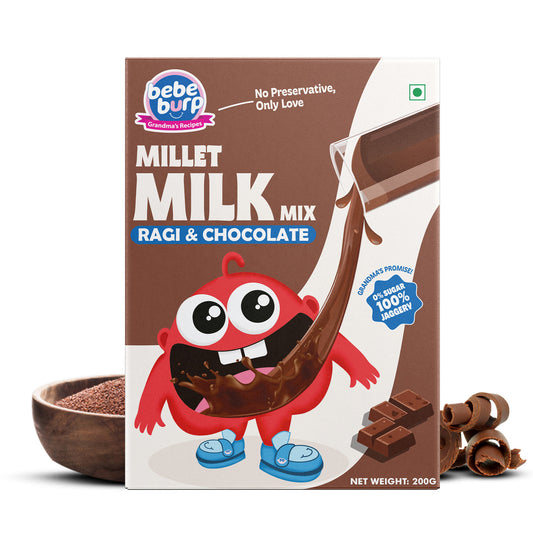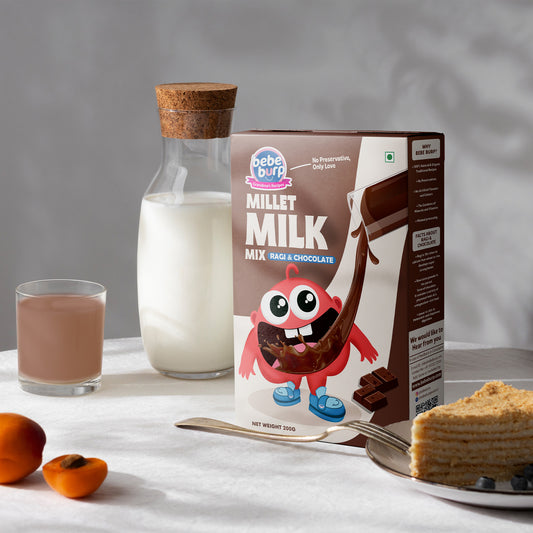Pearl Millet is one of the oldest milled grains in the world by the name Bajra. Traditionally consumed in Indian families over a long period, Bajra has lately re-emerged as a super grain because of its excellent nutrition value and comprehensive scope of health advantages.
As much as you may have enjoyed Bajra rotis during winter or in healthy grain mixtures, this small seed gives a great kick of proteins, fiber, iron and other necessary minerals that can enhance your health in general.
It is time to learn all about Bajra - its history, the benefits of this product, its preparation, and your nutritious breakfast and supper.
What Is Bajra?
Pennisetum glaucum or Bajra is a form of millet popular in India and Africa. It grows in dry and hot areas and thus becomes staple in such areas as Rajasthan, Gujarat, and Maharashtra.
The Bajra is referred to as Pearl Millet in English since it has round grains which have a pale color, and are more like small pearls.
It has been an ancient Indian grain, which has been used over centuries due to its ability to give people enduring energy and warmth during winter seasons.
Today, Bajra is making a comeback in modern kitchens as people shift toward gluten-free, nutrient-dense, and whole-food diets.
Bajra Nutrition Facts
Bajra is an excellent source of complex carbohydrates, plant-based protein, and essential minerals.
Per 100 grams of raw Bajra (Pearl Millet):
- Calories: 378 kcal
- Protein: 11 g
- Carbohydrates: 67 g
- Dietary Fiber: 8 g
- Fat: 5 g
- Iron: 8 mg
- Magnesium: 137 mg
- Phosphorus: 296 mg
- Calcium: 42 mg
Fun fact: Bajra contains more iron and fiber than wheat or rice, making it a smart choice for people with anemia or digestive issues.
Bajra vs Wheat vs Rice (per 100g):
|
Nutrient |
Bajra |
Wheat |
Rice |
|
Protein |
11g |
12g |
7g |
|
Fiber |
8g |
2g |
0.4g |
|
Iron |
8mg |
3.5mg |
0.8mg |
|
Glycemic Index |
Low |
Medium |
High |
Top Health Benefits of Bajra
Bajra is not only a grain, but a wellness soy powerhouse. The best bajra nourishment science-backed advantages are these:
1. Aids in Weight Management
Bajra is full of dietary fiber and this makes you stay fuller. This eliminates hunger cravings and overeating. It is also slow to digest and maintains stable levels of energy and aids in natural weight loss.
2. Supports Blood Sugar Control
The low glycemic index (GI) of Bajra makes it ideal for diabetics. It releases glucose slowly, helping maintain steady blood sugar levels and reducing insulin spikes.
3. Good for Heart Health
Bajra contains magnesium, potassium, and dietary fiber, all of which help regulate cholesterol and blood pressure. Regular consumption can reduce the risk of heart diseases.
4. Promotes Digestive Wellness
Bajra is good in preventing constipation, acidity and bloating and enhancing the health of the gut due to high level of fiber content. It is a natural cleanser to the digestive system.
5. Strengthens Bones and Muscles
Bajra is loaded with phosphorus and calcium, which strengthens bone density and muscles, and therefore is great in growing children, athletes, and the elderly.
6. Boosts Skin, Hair, and Nail Health
Bajra’s protein and antioxidants promote collagen production, strengthen hair follicles, and protect the skin from oxidative damage.
7. Immunity and Energy Support
Rich in iron, zinc, and B vitamins, Bajra enhances red blood cell production, improves oxygen flow, and keeps your immune system strong.
Bajra for Weight Loss and Diabetes
Bajra is the best friend to have if you are trying to lose weight or control diabetes.
- Its carbs are digested slowly and do not cause hunger cravings and help burn fat.
- Bajra controls the rise in blood sugar levels as compared to refined flours and white rice.
- Bajra provides a better balance of protein, fiber and minerals than other millets such as jowar or ragi which is ideal in maintaining weight sustainability.
Substitute one day of wheat roti with & bajra roti will make you feel fuller longer and you will feel better digesting in weeks.
How to Cook Bajra
Cooking Bajra is simple, however, it has to be soaked or ground in order to release its nutrients.
To cook whole Bajra:
- Wash and overnight soak 1 cup of Bajra.
- Boil 3 cups of water and place soaked Bajra.
- Bake on low heat within 15-20 minutes until tender.
- Use it like rice or as a base for salads and khichdi.
To make Bajra flour at home:
- Dry-roast the grains and grind them into a fine powder.
- Store in an airtight jar for up to 1 month.
Delicious Ways to Eat Bajra
There are plenty of tasty and healthy ways to include Bajra in your meals:
- Bajra Roti / Bhakri: Traditional flatbread best paired with ghee or curry.
- Bajra Khichdi: A warm, comforting dish with moong dal and veggies.
- Bajra Porridge: The perfect breakfast nourish of both toddlers and adults.
- Bajra Ladoo or Energy Balls: A health conscious sweet that is healthy.
- Bajra Dosa / Pancake: A gluten free variation of your favorite breakfast.
Bajra Flour and Its Everyday Uses
The use of Bajra flour in Indian kitchens is common because of its healthy and heavy flavour.
Key Points:
- It is gluten free and is, therefore, ideal to individuals with celiac disease.
- Bajra vs Wheat Flour: Bajra is richer in fiber, iron, and magnesium, while wheat is higher in gluten and carbohydrates.
- You can mix Bajra flour with wheat or jowar flour for softer rotis.
- Store Bajra flour in a cool, dry place to prevent moisture and rancidity.
Who Should Eat or Avoid Bajra
Although Bajra is not very unsafe, moderation is the essential issue.
Ideal for:
- Individuals with heart or diabetes issues.
- Fitness and weight-watchers.
- Children and the old requiring high-fiber food.
Avoid excessive intake if:
- You are having thyroid problems, Bajra has goitrogens.
- You are always cold, because Bajra is a sort of a warmer, and possibly, he will imbalance you in summer.
Bajra in Indian Diet & Modern Lifestyle
Bajra is an Indian village winter tradition that has been around centuries (particularly in Bajra roti or khichdi or porridge).
Frequently Asked Questions (FAQs)
1. Is it good to eat Bajra every day?
Yes, in moderate amounts. 1–2 bajra rotis a day provide excellent fiber and minerals.
2. Can Bajra be eaten in summer?
It’s better suited for winter because it generates heat in the body. If eaten in summer, pair with curd or buttermilk.
3. Is Bajra gluten-free?
Yes! Bajra is naturally gluten-free and safe for people with gluten intolerance.
4. Does Bajra aid in fat reduction of the belly?
Its fiber and protein are very high which burns fat and suppresses appetite.
5. What is the best time to eat Bajra?
Lunch or dinner in winter months is ideal to balance body temperature and aid digestion.
The Bottom Line
Bajra (Pearl Millet) is a rich, gluten-free grain, which has many advantages — not only in regulating weight and diabetics, but also in good digestion and cardiovascular health.
It is good as roti, khichdi, or porridge, but Bajra is a must in your weekly menu. It is not only a classic grain, but it is a current-day superfood that your body will be thankful to you!



